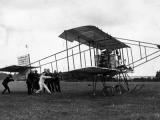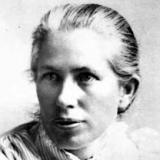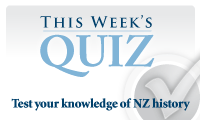What happened that day?
See historic events for any day of the year by entering the date below. Why not try your birthday?
Kiwi of the Week
Today in History

1916 Walsh becomes first NZer to obtain pilot's certificate
Following the establishment in October 1915 of the New Zealand Flying School at Ōrākei on Auckland's Waitematā Harbour, Vivian Walsh became the first New Zealander to obtain an aviator’s certificate. Most of the 100 pilots trained by Walsh and his brother Leo at the School saw combat with the Royal Flying Corps during the First World War.
These pioneering aviators built their first aircraft, a British-designed Howard Wright biplane, from imported plans. Vivian Walsh achieved New Zealand’s first controlled, powered flight in early February 1911. He flew the Manurewa more than 350 m at a height of 20 m, in front of a small group of spectators at Glencora Park in Papakura, south of Auckland.
The outbreak of the First World War saw many would-be pilots in New Zealand write to the Defence Department asking how they could qualify to join the Royal Flying Corps. The Walsh brothers also received enquiries and were eager to set up a training school. They persuaded the New Zealand government to approach the British authorities. The RFC asked for as many candidates as could be trained. It agreed to issue an aviator’s certificate by cable to each trained pilot, provided the qualifying flight was witnessed by official military observers.
The New Zealand Flying School opened for business in October 1915. Students paid £100 (equivalent to more than $13,000 in 2010) each for an engineering course and flying lessons. Upon graduating, sub-lieutenants were qualified for active service. The British government rebated graduates £75 ($9800). The first pilot’s certificate was issued to Vivian Walsh on 13 July 1916.
Henry Wigram soon followed suit in Christchurch, establishing the Canterbury (NZ) Aviation Company at Sockburn (later Wigram) air base. By 1919 nearly 300 men had learned to fly at the two schools.
Image: the Manurewa (Te Ara )




















